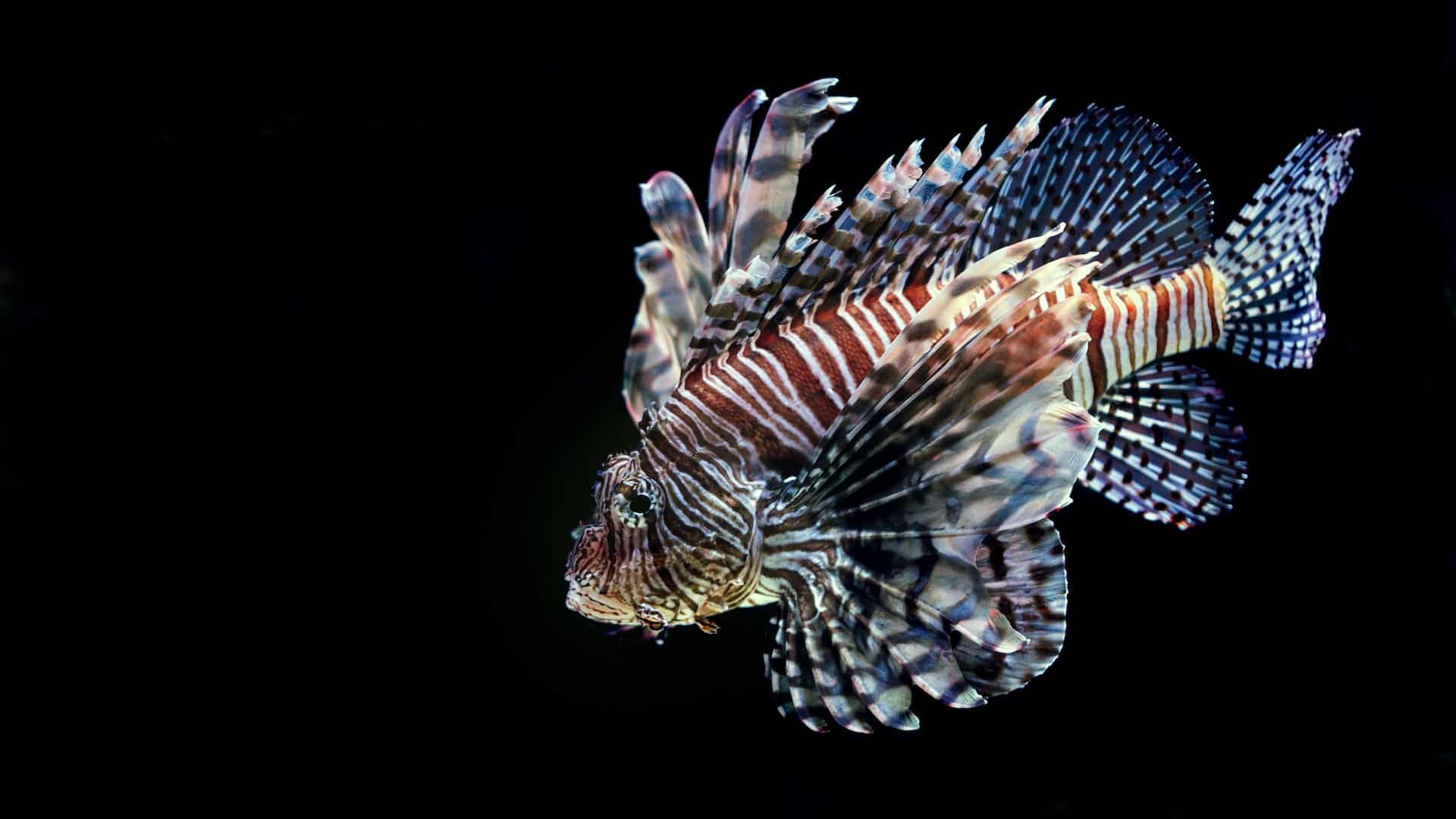Why Researchers Are Interested in Keeping (Some) Lionfish Healthy

NC State University worked with North Carolina Aquariums on a study to help improve the health and welfare of lionfish (Pterois volitans and Pterois miles). While lionfish are visually striking (and venomous), this raises the question: why do scientists care about how to keep this invasive species healthy?
The open-access study, “Comparison of Whole Blood Fatty Acid Profiles between Lionfish (Pterois spp.) in Wild and Managed Care Environments,” was published in the Journal of Zoological and Botanical Gardens. But to learn more about why researchers did the study in the first place, we talked with the study’s lead author, Nick Dannemiller. Dannemiller is a veterinarian and resident at NC State’s College of Veterinary Medicine whose research focuses on zoo and aquatic medicine.
The Abstract: My understanding is that lionfish are considered an invasive species in many ecosystems, including reef ecosystems in U.S. waters, and there are a lot of efforts aimed at limiting their population. But this research is focused on maintaining their health. Why are researchers interested in that?
Nick Dannemiller: That is a great question and one I asked myself when we started this project. While lionfish are one of the most successful marine invasive species, these eye-catching fish have long been popular in private and public aquariums. Many aquariums accredited by the Association of Zoos and Aquariums, including the North Carolina Aquariums, display lionfish to better educate guests about invasive species and their potential harm to reef ecosystems. Accredited aquariums are dedicated to optimizing the health and welfare of all animals within their care, so research on improving lionfish nutrition is needed and supported.
TA: Specifically, your work used dried blood spot sampling to advance our understanding of the fatty acid profiles in the blood of lionfish. What is dried blood spot sampling? While I’m at it, what are fatty acid profiles? And why do they matter?
Dannemiller: Dried blood spot sampling is when you allow small drops of blood to dry on specialized, high-quality paper cards designed for laboratory analysis. It can be done in humans and animals and has become increasingly popular in wildlife research. This is because it only requires a small volume of blood, can be transported easily, and doesn’t require immediate freezing or refrigeration.
Fatty acids are the building blocks of the fats and oils in any given diet and have many essential functions in humans and animals. Fatty acid profiles provide a snapshot of all the diverse types of fatty acids in a person or animal. This helps us know what levels are normal or if there is an excess or deficiency of particular fatty acids. After learning this, you can ultimately build a better diet for whatever species you’re working with.
TA: What did you learn?
Dannemiller: We used dried blood spot sampling to compare the fatty acid profiles of invasive lionfish caught off the coast of North Carolina to the profiles of lionfish living at the North Carolina Aquariums. We found differences in select fatty acid levels, saturated fatty acids, and highly unsaturated fatty acids between aquarium and wild lionfish, potentially affecting their immune system and subsequent health. We also compared the diets of invasive lionfish and aquarium lionfish. Wild lionfish diets included reef and smaller fish, whereas aquarium lionfish diets included open ocean fish, shrimp, clams, commercial diet gels, and nutrient supplements.
TA: From a practical standpoint, what does that mean? And how can that be used by people working at zoos and aquariums?
Dannemiller: To take a step back and sum up our study simply: lionfish in aquariums have different nutrition than invasive lionfish in the ocean. While this might be intuitive or obvious, I think it highlights we have a lot to learn about fish nutrition. Our research hopefully provides valuable nutrition data for any animal nutritionist or aquarist working with lionfish moving forward to build upon.
TA: This work makes me wonder – do people actually take their lionfish to the vet?
Dannemiller: Surprisingly, yes! Lionfish can eat foreign objects they shouldn’t, get injured by decorations or other fish in the same tank, or probably most commonly become overweight. All the lionfish at the North Carolina Aquariums get annual checkups to help preventive serious health issues. We even recently performed a surgery on a lionfish at the North Carolina Aquarium at Fort Fisher to remove some prolapsed tissue. A prolapse occurs whenever muscles or ligaments weaken and tissue or whole organs protrude out of the body.
TA: While this work focuses on lionfish specifically, are any of the findings applicable to fish more broadly?
Dannemiller: With over 30,000 species, fish are wonderfully diverse. This makes fish nutrition significantly challenging, given the diversity of diets. While our research was focused on lionfish, we don’t know much about the fatty acid profiles of other tropical carnivorous reef fish, like red snapper. Our findings can serve as a proxy for other species or as a steppingstone for future fish health and nutrition research. We still have much to learn about fish and the other amazing animals we share our vital and vibrant oceans with.


